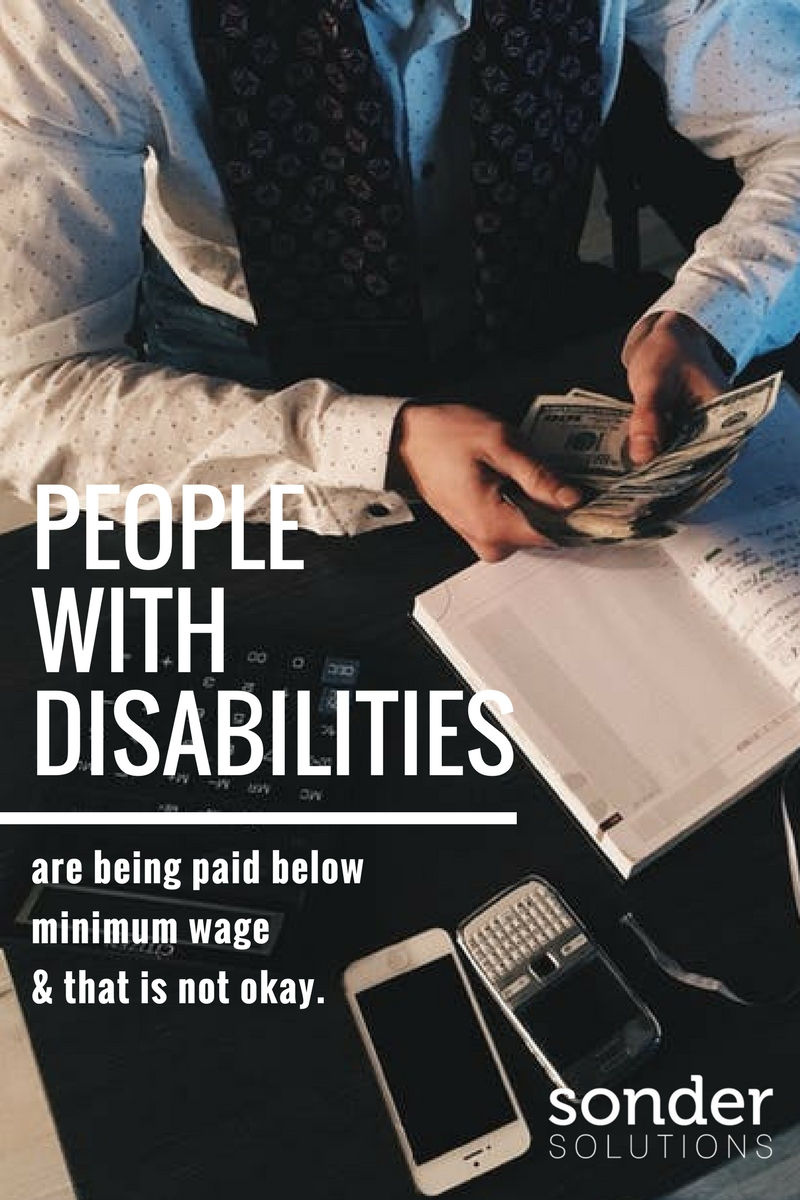
In a speech given by former Senator Tom Harkin, he spoke about people with disabilities and said:
“Twenty-six years ago today, our nation won a hard-fought battle to end discrimination for over 50 million people when we signed into law the Americans with Disabilities Act...26 years later, employers are still allowed to pay people with disabilities below the minimum wage, it is time to change that law.”
Whoa, whoa, whoa. Are employers actually able to pay people with disabilities below minimum wage? Let’s take a closer look.
The Americans with Disabilities Act (ADA) is the “most comprehensive piece of legislation that safeguards the rights and interests of disabled Americans.” Title I of the ADA protects the qualified individuals from employment discrimination. It also says that employers have to make “reasonable accommodations,” which means that they have to make changes and adjustments that will allow disabled people function at their job. The ADA also protects disabled individuals from discrimination in pay. Employers are not allowed to reduce a disabled individuals pay lower than the pay of others of the same position.
So if they are protected by the ADA, then what’s the problem? This is where something called “subminimum wage provisions” comes into play. The ADA does protect individuals from pay discrimination, but this protection is qualified.
Section 14(c) of the Fair Labor Standards Act (FLSA), employers are able to pay below the federal minimum wage to workers whose work is affected by a mental or physical barrier. The reduction in wage relates to their reduction in productivity, as compared to a worker without a disability. This means that some disabled workers can make significantly less than minimum wage, in some cases even less than a dollar per hour.
To reduce the wages, known as the subminimum wage, employers have to get a certificate from the Wage and Hour Division. According to the US Labor Department, this certificate has been applied to the employment of over 420,000 disabled Americans. Subminimum wage has been in effect since the 1930s.
President Obama in 2014 issued Executive Order 13658 which established a minimum wage for workers that were working on or under a contract with the federal government and it specifically included disabled workers under purview of section 14(c) of the FLSA. This order requires that all these workers be paid a minimum of $10.15 per hour. But this order did not prevent the use of commensurate, or equal, wages.
This means that employers are still able to pay disabled individuals less than other workers as long as the wage remains at or above $10.15 minimum.
Executive Order 13658 also only applies to work with the federal government. How is that fair? That’s easy--it isn’t. This wage discrimination for these jobs segregate people with disabilities from the rest of society. It is telling everyone that people with disabilities are not worthy of the same protections as other American citizens. And that is just not okay.
TLDR; Here's a quick Q&A:
Question: What is subminimum wage?
Answer: A legal wage below minimum wage that is allowed to be paid to certain kinds of people. According to the US Department of Labor, "individuals whose earnings or productive capacity is impaired by a physical or mental disability, including those related to age or injury..."
Q: Is this fair?
A: No. One of the problems is that subminimum wage assumes right away that people with disabilities are less productive than non-disabled workers. Doing things differently doesn't always mean getting less done.
Q: Does the subminimum wage encourage employers to hire people with disabilities?
A: Actually, it doesn't. The subminimum wage actually confirms to employers that workers with disabilities are less productive, whether they are or not. The idea that people get paid what their work is worth influences employment in this way.
Q: What alternatives are there to subminimum wage for people with disabilities?
A: People with significant disabilities can earn at least minimum wage and receive wages that are competitive.
Q: Won't people with disabilities lose their benefits if they are paid standard minimum wage?
A: Let's look at the numbers: earning limits are $1,070 for people with disabilities who are non-blind and $1,800 for people with disabilities (2014). There is a huge difference both in dollar income and in the human dignity of workers with disabilities between being paid pennies an hour to do repetitive tasks and working respectfully within these income limits to achieve win-win solutions.

Comments